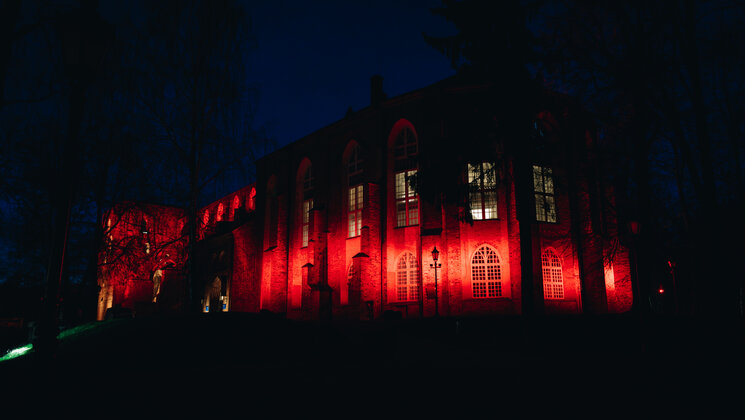The exhibition „Two Boys who Dreamed of Stars. Struve, Fraunhofer and the 200-Year-Old Telescope"
The Fraunhofer refractor was the best in the world at the time of its construction and it is the foundation of the greatest scientific achievements of the Tartu Observatory.
In 2024, it will be 200 years since the best telescope in the world at that time arrived in the Tartu Observatory from Munich – it was a large and technically innovative telescope with a lens made by Joseph v. Fraunhofer. As a result, the Tartu Observatory became one of the best in the world for its technical equipment and enabled the astronomer Friedrich Wilhelm Struve to make a series of important scientific discoveries. The tower of the observatory, which has become one of the symbols of Tartu, was rebuilt and acquired the shape as we know it today to accommodate the new telescope.
On its anniversary, the Tartu Observatory reveals the backstory of the telescope, its maker Fraunhofer and its first user Struve, introducing them in a way that anyone without prior knowledge would also understand, especially the younger generation. The exhibition tells the story of two boys' dreams and their arduous journey towards their achievements.
„The Tartu Refractor is a very important instrument in the history of astronomical observation technology, setting standards for the next fifty years. In the 1880s, there were still fewer than 10 telescopes in the world that could be considered better than the one in Tartu. It was also a key undertaking among the works of the famous optician Joseph v. Fraunhofer, since it was the first of its kind and the only one that Fraunhofer managed to build by himself."
Achievements in the scientific world
The most important discovery made with the large telescope in Tartu was arguably the successful measurement of the distance of the star Vega, which, for the first time, gave us a reliable understanding of cosmic distances. Another crucial discovery was the compilation of a new catalogue of binary stars containing more than 3000 of them.
Activities for everyone
The exhibition is displayed both in the courtyard as well as inside the observatory. It offers activities for children and is suitable for families.

Curators: Kaarel Nõmmela, Lea Leppik, Kristiina Ribelus
Designer: Marge Nelk
Builders: Tanel Nõmmik, Lauri Trolla (Wale Vaal OÜ)
Consultants: Jaak Jaaniste, Tõnis Eenmäe
Animation team:
Script: Lea Leppik, Kaarel Nõmmela
Illustrations: Anti Veermaa (Dada)
Animation: Reelika Raudsepp (Dada)
Recordings: Ervin Kont (UTTV)
Montage: Tõnu Rõõmusaare (UTTV)
Consultant: Jaak Jaaniste
Voice: Kaarel Nõmmela
Getting to the museum
- The Old Observatory is located at the eastern end of Toomemägi (Toome Hill), above Pirogov Park.
- The museum has no car park. You can use the public parking areas nearby, for example the car park of the university building at 36 Lossi Street or of the Supreme Court.
- The Old Observatory is located on Toomemägi on a natural elevation. In front of the entrance there is a steep uphill slope (up to 17%).
Getting around
- The three larger exhibition rooms (Eastern Hall, Clock Room and Western Hall) are located on the first floor of the building.
- There is no elevator in the Old Observatory.
- The planetarium, the tower and the balcony can only be accessed via a narrow stone staircase, the ceiling of which is low in some places.
- There are no thresholds on the main door of the observatory and the entrances to the Eastern and Western Halls. The other doors have low thresholds, except for the door between the Clock Room and the Western Hall, which has a high threshold. The Western Hall can also be entered from the lobby, the door of which does not have a threshold.
Cloakroom and toilets
- Outerwear can be left on the rack in the lobby or in the closets located on the basement floor. It is important to note that the Eastern Hall and the tower cannot be heated due to the storage conditions of the historical instruments there.
- You can leave your child’s pram or pushchair in the observatory lobby, or you can take it with you to the exhibition halls.
- Toilets are located on the first floor.
- There is no accessible toilet in the Old Observatory.
More information.

